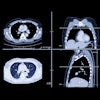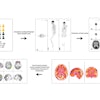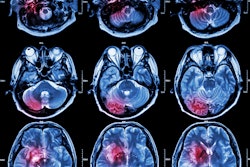An almost 30-fold variation exists among radiologists when it comes to making additional CT or MRI exam recommendations for head and neck indications, researchers have found.
The discrepancy appears to be linked to individual radiologist preferences rather than systemic factors, and underscores the need for quality improvement, wrote a team led by Jeffrey Guenette, MD, of Brigham and Women's Hospital in Boston. The study findings were published January 31 in the American Journal of Roentgenology.
"Quality improvement initiatives [that incorporate] best practices for incidental findings management may help reduce radiologist preference-sensitive decision-making in issuing [recommendations for additional imaging] for head and neck imaging and associated care variation," the group noted.
The variation in recommendations for additional imaging for head and neck indications could be ascribed to unexpected or concerning imaging findings -- which can prompt diagnostic uncertainty and patient anxiety -- but could also be due to a lack of clear guidelines, the investigators noted.
"The … paucity of relevant guidelines or best practices may lead to particularly pronounced variation among radiologists in issuing recommendations for additional imaging for head and neck imaging examinations," they wrote.
Guenette and colleagues explored associations between recommendations for additional imaging for head and neck indications, considering exam, patient, and radiologist factors and assessing the role of individual radiologist-specific behavior. Their study included 39,200 patients who underwent 39,200 head and neck CT or MRI exams between June 2021 and May 2022; 61 radiologists read these exams. The team used a natural language processing tool to identify recommendations for additional imaging in reports and assessed variation in their rates.
Of the total number of reports, 2,946, or 7.5%, had a recommendation for additional imaging for head and neck indications. The investigators found that rates for these recommendations ranged among radiologists from 0.8% to 22% -- a 27.5-fold difference. They also found that, when it came to the likelihood of recommendations for additional imaging, a quarter (25.7%) of them could be attributed to exam, patient, and radiologist factors while the majority (74.3%) were due to radiologist-specific preferences (i.e., "decision-making where the chosen strategy is largely determined by practitioner opinion," the team explained).
The researchers did find that the following factors influenced recommendations for additional head and neck imaging as well:
| Odds of recommendation for additional imaging by patient/radiologist characteristics | |
|---|---|
| Characteristic | Odds ratio (with 1 as reference) |
| CTA compared with CT exams | 1.32 |
| Exams that included a trainee in report generation | 1.23 |
| Black patients compared with white patients | 1.25 |
| Male patients compared with female patients | 0.9 |
| Patient age (per decade) | 1.09 |
| Radiologist years since training (per 5 years) | 0.9 |
Further development of appropriate guidelines for additional head and neck imaging is needed, according to the researchers.
"Quality improvement initiatives, incorporating development and implementation of relevant best practices and guidelines for incidental findings management, may be warranted to help reduce radiologist preference-sensitive decision-making in issuing [recommendations for additional imaging] for head and neck imaging and associated care variation," they concluded.
The complete study can be found here.




















